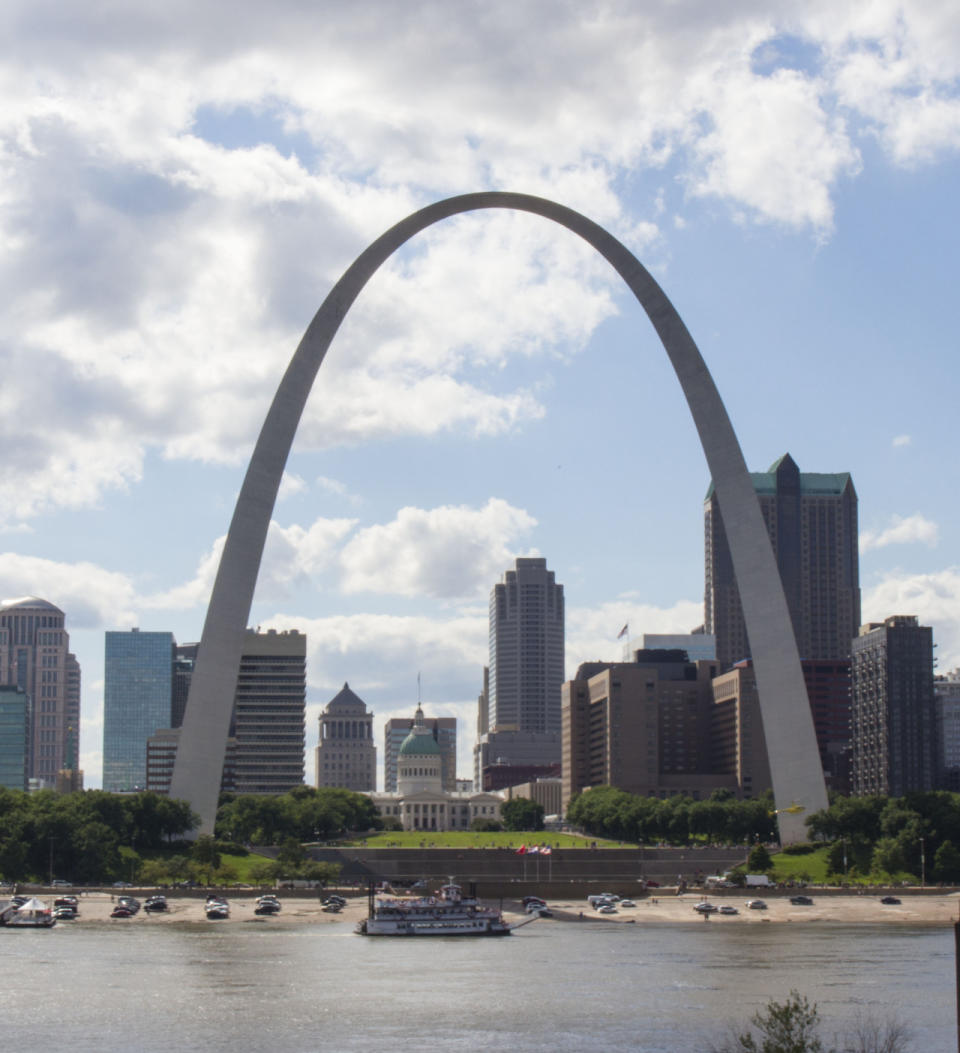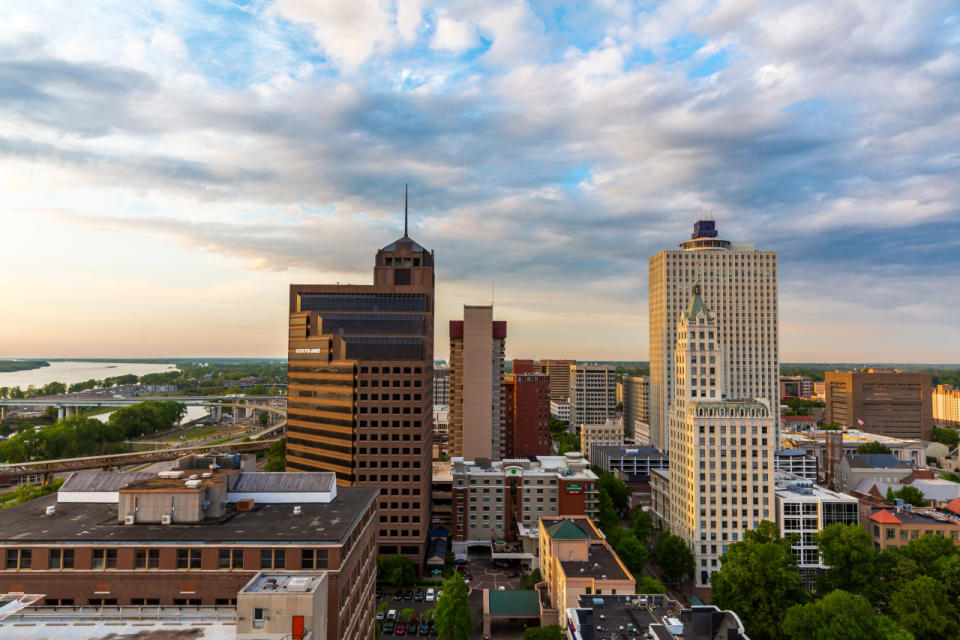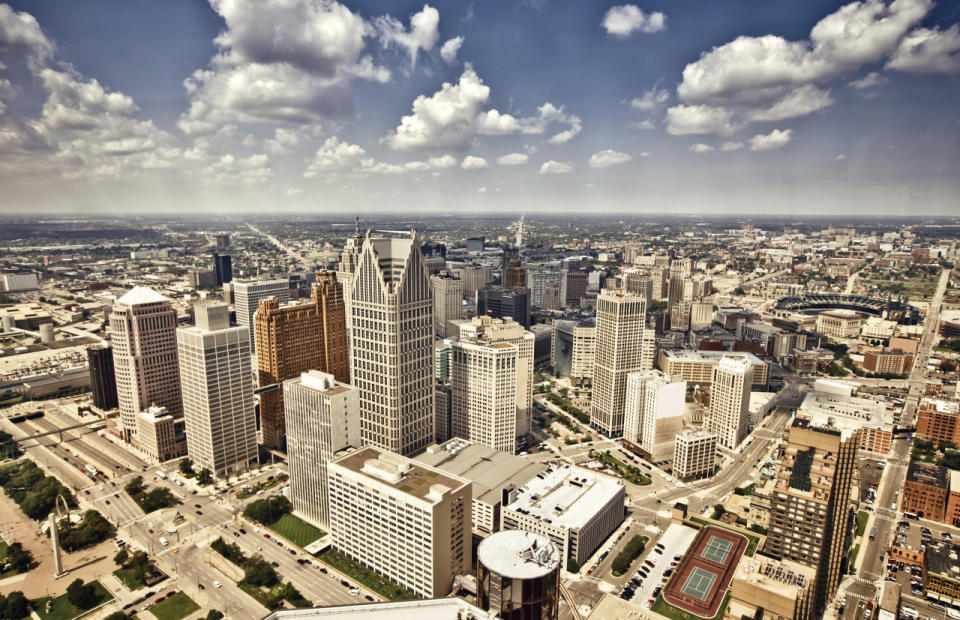Most Dangerous Cities in America
Over 400 violent crimes per 100,000 residents were reported in the United States in 2010. The rate has fallen every year since, to a four-year low of 366 violent crimes per 100,000 residents in 2014, the most recent year for which data is available.
Though the decline in violent crime nationwide has made the country safer, a number of American cities are still especially dangerous. By examining the incidence of violent crime in the nation’s largest cities, 24/7 Wall St. identified the most dangerous cities in America.
Yahoo Real Estate is publishing the top five below. Click here to see the full list of the 10 most dangerous cities on 24/7WallSt.com.
Violent crimes include murder, rape, aggravated assault, and robbery. In each of America’s most dangerous cities, there were at least 1,300 violent crimes per 100,000 residents – more than triple the national violent crime rate of 366 incidents per 100,000 residents.
The nation’s largest cities each employ thousands of often-well-equipped police officers. Nearly 50,000 police work in New York City. According to John Roman, senior fellow at the Urban Institute, a social policy research think tank, effective policing can help reduce crime, but “it doesn’t move the dial an enormous amount.” For Roman, poor social and economic conditions are the drivers of crime and significant change comes by creating the conditions for economic opportunity.
For example, all but one of the most dangerous cities had a smaller share of adults with a high school diploma than the national share. Similarly, unemployment rates exceeded the national average.
“When you have cities where the schools aren’t good [and] the job prospects are bad, you almost always tend to have greater crime,” Roman said.
In addition to low educational attainment and high unemployment, poverty is pervasive in the country’s most dangerous cities. In all of the country’s most dangerous cities, the poverty rate exceeded the national rate of 15.5%. In Detroit, the nation’s most dangerous city, 39.3% of residents lived below the poverty line last year.
According to Roman, “It’s a classic tale of disadvantage. When you have people who don’t have a lot of opportunity, they tend to gravitate towards crime in ways that people with more opportunity don’t.”
The FBI crime figures provide data only on reported crimes. As Roman explained, crime is underreported everywhere. Cultural differences between cities largely determine how crime is reported. “The relationship between the citizenry and the police,” Roman said, “matters a lot in terms of how much crime gets reported.” In some cities, “where citizens don’t view the police as legitimate,” crimes are much less likely to be reported.
Still, Roman suggested that comparison in violent crime trends is useful. Since reporting of homicides and violent crimes tends not to change, ”you get the same kind of rate of reporting every year, so the trend is actually meaningful.”
To identify the most dangerous cities in America, 24/7 Wall St. reviewed violent crime rates among the nation’s cities with populations of 100,000 or more from the FBI’s 2014 Uniform Crime Report. Property crime rates also came from the FBI’s report. The data were broken into eight types of crime. Violent crime comprises murder and nonnegligent manslaughter, rape, robbery, and aggravated assault. Property crime consists of burglary, arson, larceny, and motor vehicle theft. In addition to crime data, we also reviewed median household income, poverty rates, and educational attainment rates from the 2014 Census Bureau’s American Community Survey as well as unemployment data from the Bureau of Labor Statistics.
These are the nation’s most dangerous cities.

5. Birmingham, Alabama
> Violent crimes per 100,000: 1,588
> 2014 murders: 52
> Population: 212,115
> Poverty rate: 30.5%
There were 52 murders in Birmingham in 2014. Adjusting for population, Alabama’s largest city had the seventh highest murder rate in the country. Birmingham also ranked among the 10 worst cities in the country for robbery, aggravated assault, burglary, and arson. Overall, with 1,588 violent crimes per 100,000 residents, Birmingham is the fifth most dangerous city in the country.
As is typical in cities with high violent crime rates, the typical household income in Birmingham is low. Only seven of the 286 metropolitan areas examined had a median household income lower than Birmingham’s $30,043. Additionally, the city’s poverty rate of 30.5% was among the worst in the country and nearly double the national poverty rate of 15.5%.

4. St. Louis, Missouri
> Violent crimes per 100,000: 1,679
> 2014 murders: 159
> Population: 318,574
> Poverty rate: 28.5%
St. Louis had the most murder cases per 100,000 residents of any major city in America. With about 50 reported murders per 100,000 residents, the murder rate in St. Louis was nearly 10 times the national figure. Also, with about 1,051 instances of aggravated assault per 100,000 residents reported last year, the only major cities with more assault cases than St. Louis were Detroit and Memphis. While the violent crime rate decreased nationally from 2013 to 2014, the rate in St. Louis increased by about 85 cases per 100,000 residents. Most areas with high crime rates also tend to have high poverty rates, and with 28.5% of its residents living in poverty last year – 13 percentage points higher than the national poverty rate – St. Louis was not only the fourth most dangerous city, but also one of most impoverished urban areas in the nation.

3. Oakland, California
> Violent crimes per 100,000: 1,685
> 2014 murders: 80
> Population: 409,994
> Poverty rate: 20.1%
Oakland is the only city with high crime rates where a typical household earned more than the typical American household last year, at $56,188 versus $53,657, respectively. In addition, 39.3% of Oakland adults had a bachelor’s degree – also higher than the comparable national education attainment rate of 30.1%. Despite having a higher income than the national median and a relatively educated population, Oakland suffers from a serious crime problem. It had the the highest robbery rate of any large city in the nation, at 849 per 100,000 residents. It had almost double that in motor vehicle thefts – 1,590 per 100,000 residents – also the highest in the nation. Despite having the third highest violent crime rate, the number of reported crimes dropped by about 291 per 100,000 residents, the largest decrease of any major city.

2. Memphis, Tennessee
> Violent crimes per 100,000: 1,741
> 2014 murders: 140
> Population: 654,922
> Poverty rate: 29.8%
Located along the banks of the Mississippi River in southwest Tennessee, Memphis is home to over half a million people. It is also the second most dangerous city in America. There were 140 homicides and 501 reported rapes in Memphis last year alone.
With 29.8% of residents living in poverty, Memphis’s poverty rate was nearly double the national rate of 15.5%. Similarly, median household income in the city was well below the national median. The typical household in Memphis brought in $34,704 last year, nearly $20,000 less than typical American household. Memphis also had one the higher unemployment rates of any large city in the nation. At 8.7%, it was 2.5 percentage points higher than the national unemployment rate of 6.2%.

1. Detroit, Michigan
> Violent crimes per 100,000: 1,989
> 2014 murders: 298
> Population: 684,694
> Poverty rate: 39.3%
Despite crime dropping in the city for three consecutive years, Detroit remains the most dangerous city in America. As is the case with most cities with high crime rates, Detroit’s poverty rate and income levels were among the worst in the country. A typical Detroit household made $25,769 in 2014, second lowest in the country and less than half of what the typical American household made. Similarly, its poverty rate of 39.3% was the second highest in the county well more than double the national poverty rate of 15.5%.
A total of 298 murders were reported in Detroit last year. The only cities with more murder cases were Chicago and New York, whose populations were about four and 12 times larger than Detroit’s, respectively. The Motor City also led the nation in aggravated assaults, with 1,342.4 incidents reported per 100,000 residents – nearly six times the national rate. A city’s crime rate typically increases as its population declines, as residents who can leave undesirable conditions do so. Between 2010 and 2012, Detroit’s violent crime rate decreased even as its population continued to decline – making the drop in crime rate all the more significant.
To see all 10 of the most dangerous cities in America, visit 24/7 Wall St.

